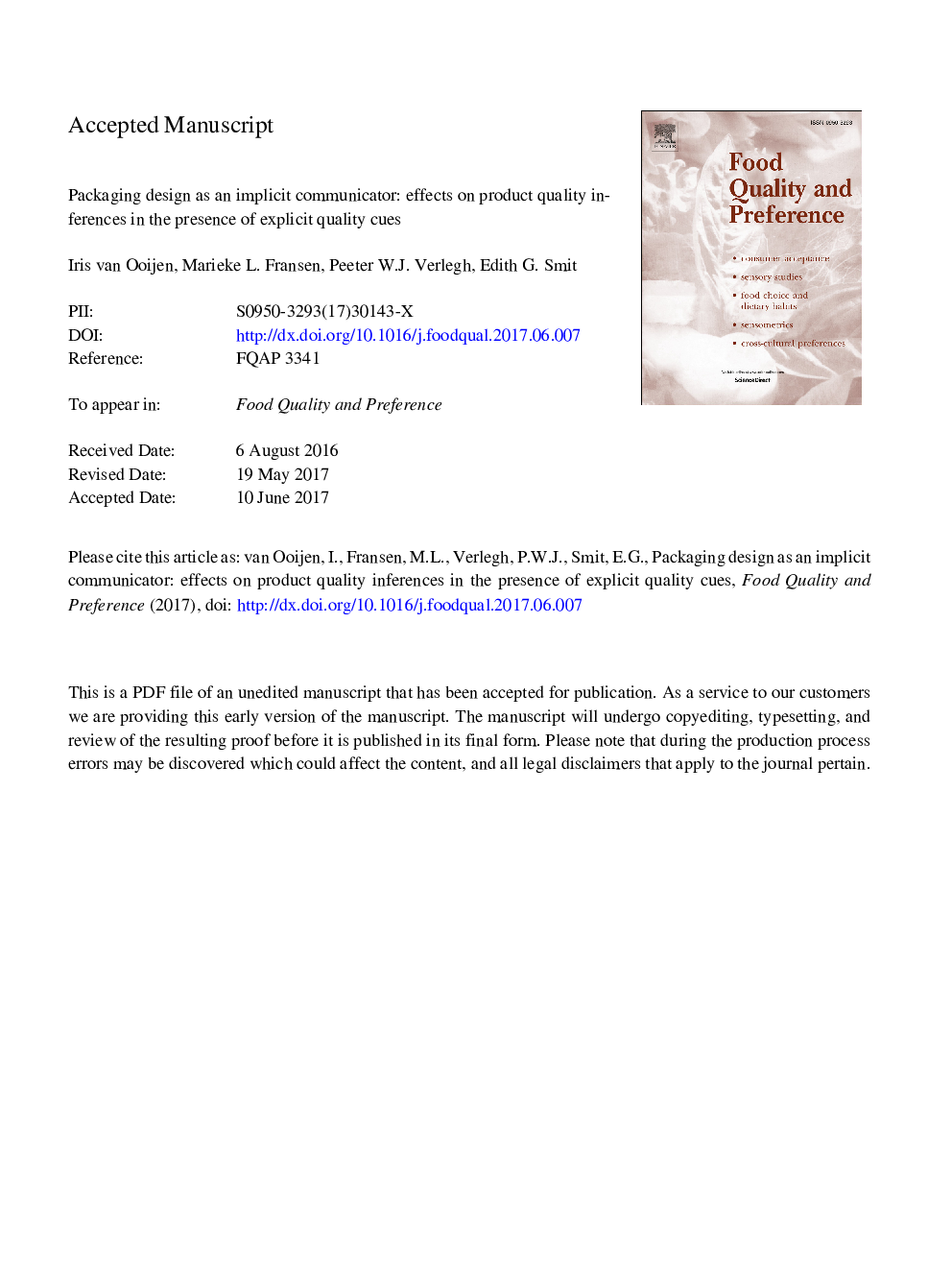| Article ID | Journal | Published Year | Pages | File Type |
|---|---|---|---|---|
| 5736013 | Food Quality and Preference | 2017 | 33 Pages |
Abstract
In this work we examine the interactive effect of packaging design and explicit packaging cues on quality inferences. Although the effect of explicit cues on product perception has been studied extensively, systematic research on this topic is still in its infancy. Furthermore, it has never been investigated whether design cues and explicit cues interact with each other in eliciting product inferences. Gaining knowledge about these effects is important, because in real-life situations consumers are predominantly exposed to product packaging that contains both subtle and explicit cues. In this work we examine how value - a dimension of colour that is related to “darker” versus “lighter” colours - affects product inferences. Two studies demonstrate that consumers use value as a cue to make product quality related inferences. Furthermore, we examine how consumers make product quality interferences when packaging design cues are congruent and incongruent with explicit quality cues. Based on Cue Consistency Theory (Maheswaran & Chaiken, 1991; Miyazaki, Grewal, & Goodstein, 2005) and information diagnosticity, we predicted that packaging design cues only affect quality inferences when they are congruent with explicit cues. Contrary to Cue Consistency Theory, results indicate that overall, packaging design affects quality inferences independently from explicit attribute cues. They emphasize the communicative power of packaging design, and value in particular.
Related Topics
Life Sciences
Agricultural and Biological Sciences
Food Science
Authors
Iris van Ooijen, Marieke L. Fransen, Peeter W.J. Verlegh, Edith G. Smit,
